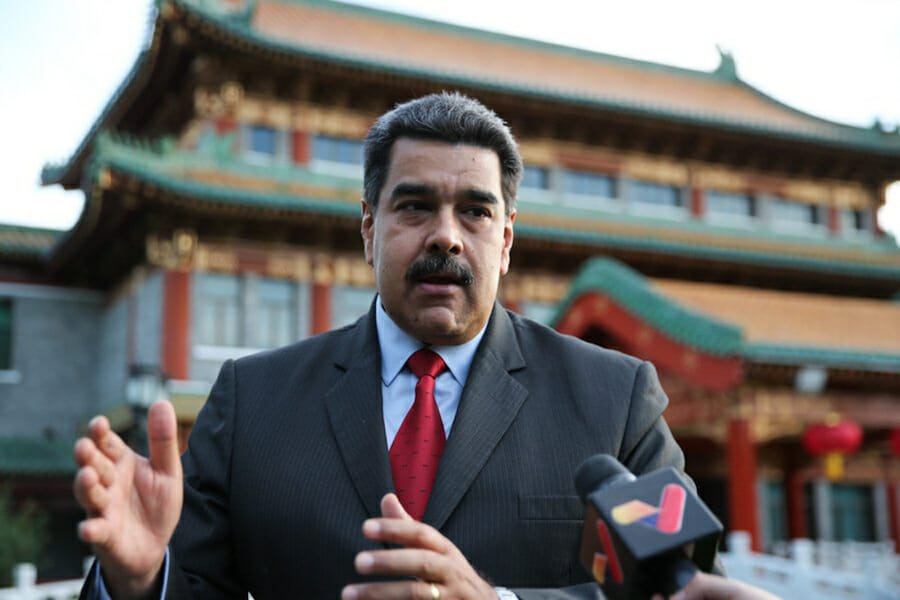
South America is Facing Unrelenting Crisis and Uncertainty
South America is experiencing one of its most difficult periods, as Brazil, Argentina and Venezuela succumb to social, economic and political turmoil. Venezuela’s national struggles have spread, affecting the security and economies of its southern neighbors as uncertainty pertaining to the Brazilian elections have impacted other economies and Argentina’s economic debacle has destabilized countries like Paraguay, Uruguay, and Bolivia. Despite the uniqueness of each situation, the development of these crises has been propagating in a domino effect in the region, leading to an overall economic decline in South America.
Halfway through the first decade of this century, these three countries enjoyed economic and social stability, creating a prosperous time in the region; but everything changed after 2011 when these countries began to experience what we see today as a regional crisis.
South America received one its biggest blows when Brazil, which represents roughly 34 percent of the Latin American economy, began to experience economic and political problems spurred by the Lava Jato corruption scandals. These scandals would later lead to the impeachment of not only Brazil’s former president, Dilma Rousseff, but also resulted in the impeachment of the Peruvian president, Pablo Kuczynski, and the trial of former Ecuadorian president, Rafael Correa, on corruption charges. Affected by the plummeting of commodity prices, fiscal deficit, and corruption, Brazil would later start to see the effects of a serious economic crisis. As a result, Brazil’s GDP decreased by 7.4 percent between 2015-2016 and it caused a 0.47 percent contraction in Latin America’s growth (2016).
In this context, Brazil’s economic effects in times of crisis spread like tentacles across the region affecting the development, production, and growth of other countries. For example, Argentina experienced a slowdown in exports and production, especially in the car industry during the 2015-2017 period. The former Argentinian Minister of Foreign Affairs, Susana Malcorra, said “If Brazil sneezes, we [Argentina] have pneumonia” in order to explain the correlation between Brazil’s and the region’s problems.
Corruption scandals, an increasing unemployment rate, and insecurity led to the polarization of this month’s presidential election and ultimately led to right-wing Jair Bolsonaro winning his election against leftists Fernando Haddad. What is sure is that the uncertainty surrounding Brazilian politics will persist even months after the elections. Without the resolution of Brazil’s economic and social problems, its South American neighbors will continue to suffer the consequences of the Brazilian Real’s fluctuations and political uncertainty.
Meanwhile, Argentina’s crisis is reminiscent of the chaos of the 2000’s crisis as President Mauricio Macri maneuvers through a political drama to exit a new economic crisis. This year, Argentina was hit by the worst drought in the last 50 years affecting the country’s agricultural trade which represents 30 percent of Argentina’s exports. In addition, failed austerity measures, political drama, corruption, and international trade wars sank the Argentinian peso, making it lose between 50 percent of its value against the US dollar in the first half of 2018. As a result, international investors have lost trust in Argentina which unleashed the current economic debacle. As a result, Macri requested $50 billion from the International Monetary Fund (IMF) in order to avoid a default. Argentina ended up receiving a historical loan of $57 billion.

Argentina is yet to face increasing social unrest as austerity measures kick in and civilians begin to feel raising inflation, which is expected to reach 45 percent by the end of this year. Major protests have been staged and Argentinian labor unions have begun strikes that have paralyzed the country in order to protest against Macri’s reforms. However, the Argentinian crisis goes beyond its borders, the economic debacle has affected other countries like Uruguay, Paraguay, and Bolivia.
Following the collapse of the Argentinian Peso, Uruguay was forced to sell $500 million to avoid losing competitiveness with the Argentinian market as 60 percent of the tourists coming to Uruguay are Argentinian. Uruguay also removed the Value Added Tax (VAT) for foreigners in a move to further incentivize tourism in the small South American country. Meanwhile, border transactions that previously benefited Paraguay were reversed as many Paraguayans now cross the border into Argentina to spend their money, leading to a business decline in Paraguay’s border cities. Bolivia’s government set up an economic team to deal with the effects of the Argentinian crisis, and decided to place tariffs on Argentinian products to avoid dumping.
Venezuela’s situation is expected to continue in a downward spiral as the government has failed to stop rampant inflation, projected by the IMF at 1 million percent, and the decline of the Venezuelan economy. Venezuela has plunged into its worse crisis in history as purchasing power declines at daily rates and the economy registers double-digit contractions. Plummeting oil prices coupled with inefficient governance have led to worse living standards in the South American country. The economic collapse of Venezuela has affected the country’s economic partners such as Colombia and Panama. With the decline of Venezuela, these countries have seen their economic activity sharply decrease.
The country’s precarious situation has forced many to look for opportunities outside of Venezuela. Since 2015 between 2 to 4 million Venezuelans have left the country in search of better opportunities, Colombia has been the country receiving the highest amount of refugees, roughly 1 million Venezuelans. Labor oversupply spurred by the influx of Venezuelan migrants represent a major challenge for Colombia, which is currently trying to incorporate demobilized guerrillas into the legal economy. The refugee crisis has affected not only Colombia but Venezuela’s other neighbors as they are struggling to handle the number of Venezuelan migrants entering their economies daily. As the crisis worsens, we should expect the exponential increase of Venezuelan migrants and thus a bigger burden.
The Venezuelan government introduced new mechanisms to deal with the economic crisis in August, however, they are futile as the country continues to plummet into an economic crisis. The future for Venezuela remains dim as the country’s oil and gas industry, which represents 90 percent of its exports, has been experiencing a drop in production due to lack of maintenance and investment.
South America is expected to continue facing economic and social unrest as long as these three countries are not able to solve their internal problems. South America’s economic dynamics have reached a level of interconnectedness that spreads not only economic decline but also stagnation.
Right-wing parties in Argentina and Brazil have taken power following the wave of leftist’s governments that commanded these countries in recent years. Argentina could be moving more towards the center as Mauricio Macri’s government faces low popularity ratings and could possibly lose a contested 2019 presidential election. Brazil ended up with a radical military right-wing government whose actions will determine the path of the largest South American country. Meanwhile, the Venezuelan government remains politically stable as fragmentation and division of opposition parties have strengthened the government’s position.
South America’s future will remain gloomy until a new government of Brazil takes power and Argentina is able to resolve its political drama and economic debacle, especially considering that their GDP will contract by 0.5 percent by 2019. On the other hand, Venezuela remains the most negative scenario with very few options left for the economic revival of the country. Prolonged crisis in any of these countries will continue to spread like a flu across other South American neighbors.


